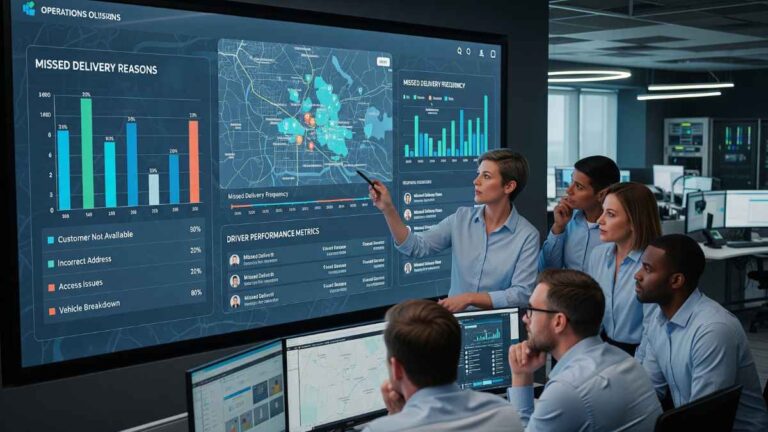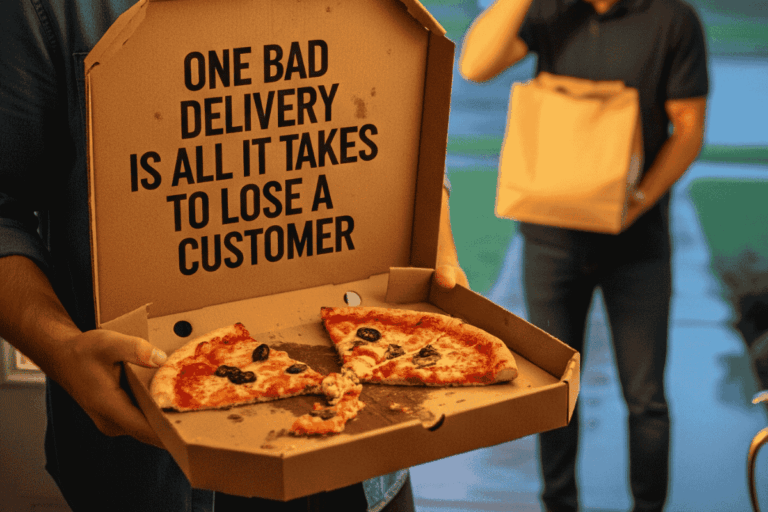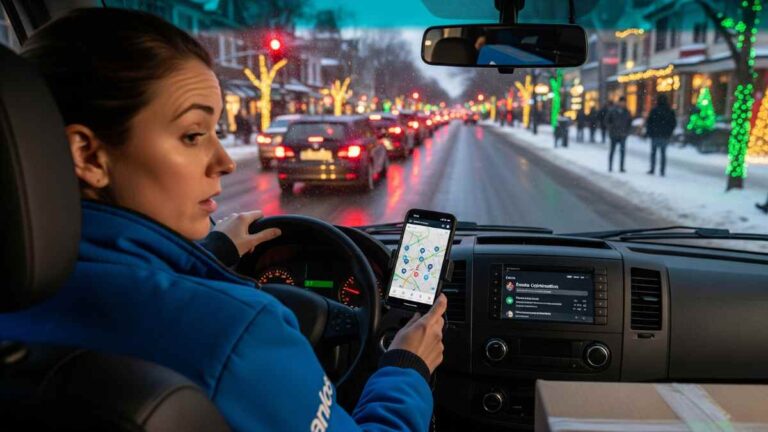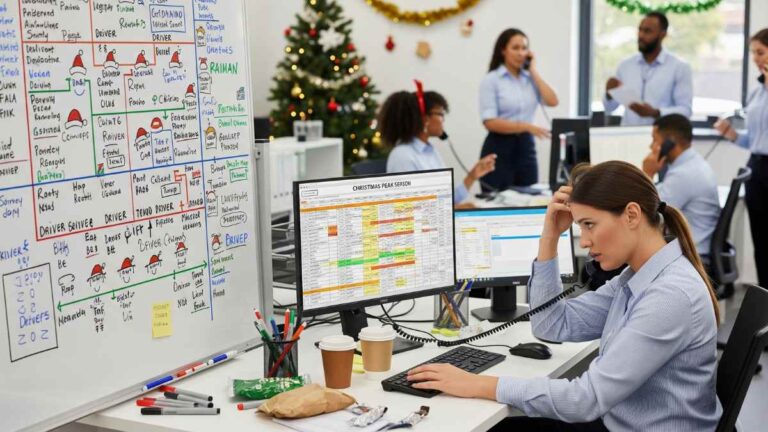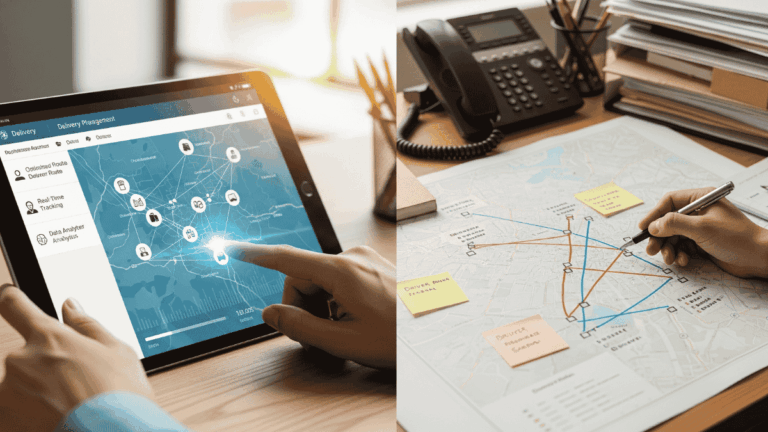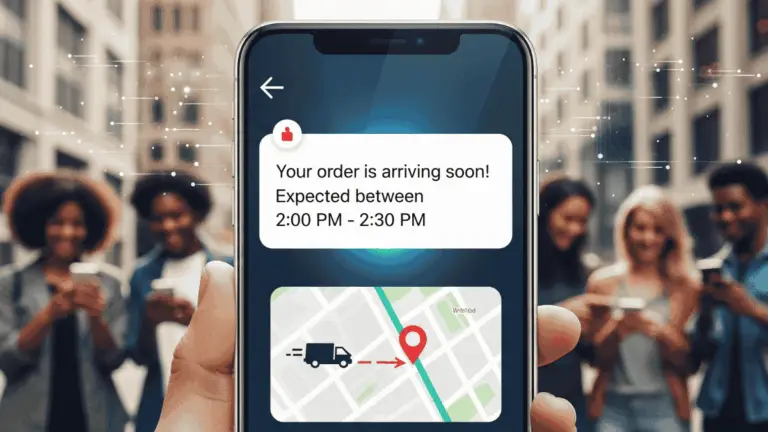Real time tracking has become a critical tool for businesses across many industries, allowing them to monitor their assets, vehicles, and deliveries throughout their day-to-day operations.
Whether it’s ensuring efficient fleet operations or providing customers with accurate delivery updates, the ability to track movements has made managing logistics across retail, healthcare, and industry a breeze.
In this guide, we’ll explore how real time tracking works, its benefits, applications, and what businesses can expect from the latest trends and advancements.
What is real time tracking?
Real-time tracking is a method used to monitor the accurate location data of assets or goods, while in transit, as it happens.
Vehicle trackers like GPS (global positioning systems) and other tracking systems play a vital role in making this work, all of which enables businesses to see exactly where their items or drivers are, at any given time.
This ensures more control over your logistics and delivery operations, as well as transparency between the company, its drivers, and customers.
How does real time tracking work?
Real time tracking works on three core technologies:
- GPS tracking.
- Mobile networks.
- Cloud platforms.
So, how does it all tie into one proficient tracking system?
1. GPS tracking:
Real time tracking software uses satellite signals to pinpoint the exact location of an asset, vehicle, or person.
2. Mobile networks:
Mobile data is then used to transmit the GPS location to a centralized platform. This ensures the tracking information and live location is updated to the second.
3. Cloud platforms:
Then the final step is cloud computing. This enables the collected data to be stored, making it easily accessible from any device.
Businesses can then analyze routes and track deliveries to communicate the status of the goods in transit to their clients.
This data can also be used later on to optimize future operations more efficiently.
That all sounds good on paper, but how does it work for your drivers, out on the road, navigating weather and traffic conditions?
Applications for fleet tracking
Now, you wonder which industries most benefit from real time tracking software solutions. While it spans a wide range of services, it is perfect for:
- Logistics.
- Transportation.
- Retail.
- E-commerce.
- Healthcare.
And many more.
1. Real time tracking for logistics
This software allows logistics companies to monitor shipments, optimize delivery routes, and provide accurate ETAs.
Example: Amazon tracks its delivery fleet in real time to optimize delivery routes, avoid traffic delays, and ensure on-time deliveries.
One of Locate2u’s clients – My Food Box – delivers fresh meals to Australians on a weekly basis. Since My Foodie Box uses fresh ingredients, getting the delivery times right is vital.
Their meal kits now arrive at customers’ doors promptly, and the Locate2u software handles everything from optimizing delivery routes to sending live tracking notifications to clients.
2. Real time tracking for transportation
The same applies to transportation companies who need to find the most efficient way to get from point A to point B.
Example: Public transit systems use real-time tracking to give commuters live updates on bus and train locations.
This improves service reliability while also reducing wait times.
3. Real time tracking for retail
Fashion retailers have found great success by using real-time tracking to provide accurate ETAs and enhance customer satisfaction.
Example: A fashion retailer uses real-time tracking to update customers on the exact location of their deliveries, providing accurate ETAs and enhancing customer satisfaction.
4. Real time tracking for e-commerce
E-commerce companies rely heavily on real-time tracking to streamline last-mile operations. This keeps their customers updated on where their deliveries are at any given point in time.
Example: Walmart uses real-time tracking to inform customers of their package’s progress – right from warehouse dispatch all the way through to doorstep delivery.
ALSO READ: Enhancing customer satisfaction with real-time tracking
5. Real time tracking for healthcare
Hospitals and clinics use it to track medical equipment, monitor ambulance locations, and improve emergency response times.
Example: SuperPharmacy provides its customers with reliable and trustworthy delivery of their orders. They navigate high demand and their delivery networks across Australia.
With this type of tracking method, all those hassles go away.
ALSO READ: Medicine delivery: How to service patients fast
The benefits of real time tracking
Real-time tracking offers a variety of advantages for businesses looking to optimize their operations.
1. Transparency
One of the primary benefits is increased transparency. By tracking vehicles and assets in real time, businesses can always know where their assets are, reducing uncertainty.
2. Response times
This enhanced visibility also allows for faster response times, as managers can quickly identify traffic patterns, react to unexpected delays, and reroute drivers when necessary to avoid traffic or obstacles.
3. Optimize routes and reduce costs
Real-time tracking also leads to more efficient routes. With data on traffic, road conditions, and delivery times, businesses can optimize routes, cutting down on travel time and fuel usage.
This, in turn, reduces costs by saving fuel and reducing the need for overtime labor.
4. Customer experience
Additionally, customer satisfaction improves because real-time updates allow customers to track their deliveries, offering transparency and reducing the anxiety of unknown arrival times.
According to a report from Inbound Logistics, 82% of customers prefer real-time tracking for timely deliveries, enhancing trust and boosting repeat business.
Geotab research suggests that businesses using real-time tracking cut fuel costs by up to 15% and improve overall operational efficiency by 25%.
Real time tracking challenges and considerations
While real-time tracking offers numerous benefits, businesses may still encounter challenges during implementation. One of the biggest hurdles is the cost of implementation.
This expense can be significant because a business would need to purchase and implement GPS devices, software platforms, and hardware integration.
Small businesses may find the initial investment costly, but long-term savings will be worth the price.
Then there are also privacy concerns that arise when tracking employees or drivers.
It’s essential for businesses to be transparent about how the data will be used. Managers must ensure their tracking policies comply with local regulations.
Hardware reliability is another potential issue.
GPS devices may malfunction or experience connectivity problems which could lead to inaccurate data. There’s an easy solution for this.
Technical faults can be mitigated by choosing a reliable service provider and scheduling regular maintenance to ensure uninterrupted tracking.
By addressing these challenges early on, companies will get the most out of real-time asset tracking, while minimizing potential issues.
The technology behind real time tracking
The core of real-time tracking consists of GPS technology, mobile networks, geofencing technology, cloud computing, and artificial intelligence.
1. GPS and mobile networks
A global positioning system uses a network of satellites to determine the precise location of vehicles or assets, providing businesses with up-to-date location information.
This data is sent to a central system through mobile communication networks, ensuring real-time updates.
2. Geofencing
In addition to GPS, Real-time location tracking also often incorporates geofencing capabilities. Businesses use geofencing to essentially set up virtual boundaries.
When a vehicle enters or exits a predefined area, the system sends an alert, allowing businesses to monitor movement and improve route planning.
This feature is useful for monitoring restricted zones or ensuring compliance with predefined routes.
3. Cloud computing, AI and machine learning
New innovations such as cloud computing have greatly enhanced real-time tracking systems.
Cloud platforms allow businesses to store vast amounts of tracking data and access it from anywhere.
Furthermore, AI and machine learning are now being integrated into tracking systems, enabling smarter route planning and predictive analytics.
These technologies not only help businesses track their fleets but also predict potential delays, optimize fuel usage, and improve overall efficiency.
4. Data-driven insights
The benefits of data-driven insights cannot be overstated.
Continuous monitoring generates valuable data that can be analyzed to derive insights and identify patterns.
This data can then be used to discover areas for improvement, make educated decisions, and implement strategies for boosting operational efficiency.
Future trends in real time tracking technology
Emerging technologies will continue to enhance real-time tracking:
- AI Integration: AI will offer predictive insights, allowing businesses to foresee delays or issues before they happen.
- Automated Route Optimization: AI can automate route planning based on real-time conditions.
- IoT (Internet of Things): Sensors and devices will monitor vehicle conditions, giving more data for efficient fleet management.
In the near future, businesses can expect smarter systems that will further optimize operations and improve resource management and decision-making.
Real time tracking: recap
Real time tracking offers major benefits.
This includes:
- Cost savings.
- Transparency.
- Efficient routing.
- Faster response times.
- Improved customer satisfaction.
While challenges like costs and privacy concerns exist, they can be overcome with the right approach.
Real time tracking has thus become an essential part of delivery services, since businesses in this sector need a reliable delivery tracking solution
As we discussed, the right software can meet customer expectations while also improving overall efficiency and reducing costs.
As new technologies are developed, real time tracking will become even more powerful. It will help businesses stay competitive in a very fast-paced market.
Locate2u’s real-time tracking technology can provide small businesses with the tools they need to optimize their delivery operations, monitor driver performance, prevent theft, and ultimately ensure timely delivery.
NOW READ: How real time tracking helps your restaurant run smoothly
About the author
Cheryl has contributed to various international publications, with a fervor for data and technology. She explores the intersection of emerging tech trends with logistics, focusing on how digital innovations are reshaping industries on a global scale. When she's not dissecting the latest developments in AI-driven innovation and digital solutions, Cheryl can be found gaming, kickboxing, or navigating the novel niches of consumer gadgetry.


